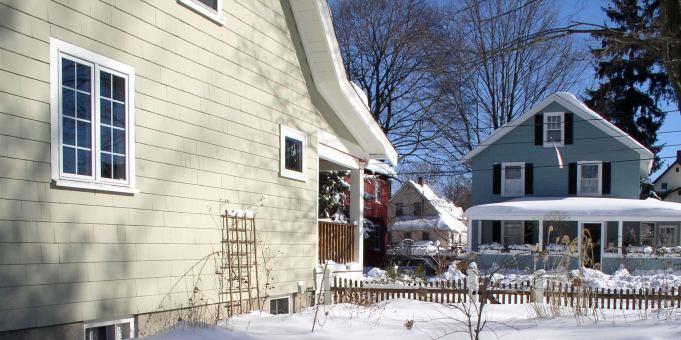During heating season, about 30% of a home’s heating energy is lost through windows. In cooling season, about 76% of sunlight that falls on standard double-pane windows enters to become heat, making your air conditioner work harder to keep your home cool. You can use your window coverings in strategic ways to maximize comfort and cost savings for each season.
- On a sunny winter day, open the blinds or curtains in the morning to allow the sun to heat your home through the day—especially those that receive direct sunlight, and shut them after sundown to insulate your windows and keep the heat inside.
- On sunny summer days, keep the same blinds or curtains down to keep the direct sunlight from entering and heating the room.
Most types of window treatments will result in energy savings, but the exact savings will depend on the type of attachment, the season, the climate, and how the attachment is used.
Tightly installed cellular shades can reduce heat loss through windows by 40% or more, which equates to about 20% heating energy savings. In cooling seasons, cellular shades can reduce unwanted solar heat through windows by up to 80%, reducing the total solar gain to 15% or less when installed with a tight fit.
Window quilts have a sheet of quilted material that can be opened by rolling and closed by unrolling. They typically fit snug against the trim, either on tracks or with an attachment such as Velcro or snaps. Because of their snug fit, window quilts offer R-value increases similar to cellular shades, and they typically cost less.
In addition to the window treatments, storm windows with low-e coatings are effective at improving thermal performance of windows and reducing solar heat gain.
For more information visit: https://www.energy.gov/energysaver/energy-efficient-window-attachments


Recently on Twitter